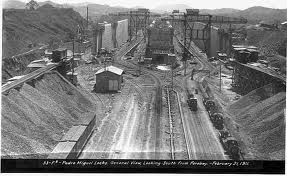One of the largest and greatest engineering projects ever undertaken; the building of the Panama Canal is marred with controversy, death and diplomatic wrangling to secure the crucial economic artery which would make navigating the tricky waters of the Straits of Magellan a thing of the past.
The idea of a canal cutting through Panama first emerged in 1543, 400 years before its construction, when the King of Spain ordered a survey of the area to ease the passing of his ships from Peru to Spain. A number of plans were elaborated but nothing was ever finalised despite Spain’s desire to gain a strategic advantage over Portugal and increase its global reach. The strategic significance of the narrow isthmus only grew over the years with many countries drawing up further plans for trade links in the area, but it was the French who eventually secured its construction in 1881, buoyed by their success in building the Suez Canal. However, it was to be an ill-fated endeavour with the tropical conditions and health risks costing the lives of 22,000 workers and bankrupting the company in 1894.
The US quickly seized upon this opportunity. By supporting Panamanian rebels in their struggle against Colombian rule and blocking the arrival of fresh Colombian troops, the US pulled off a political and economic masterstroke and guaranteed themselves the acquisition of the rights to the construction of the canal, from a grateful free Panamanian government.
American takeover of the construction started in 1904 and would take a decade to build, finally being completed in 1914 at a cost of over 8 billion dollars. Its completion marked a historic event, linking two great oceans and facilitating more efficient economic transactions between the Americas and Europe.
However, US-Panamanian relations grew progressively tenser throughout the 20thcentury with calls for it to be handed over to the Panamanian people. In 1977, after decades of negotiations and skirmishes, the process of giving the Panama government free control of the canal began on the conditions that its waterway remained neutral; a process which was finally completed in 1999.
The canal’s effects on global maritime trade patterns have been colossal. World economic and commercial developments of the past century have been widely impacted by the canal linking two of the planet’s great bodies of water, reducing the transit distance for certain vessels by 8,000 km. Crucially, the canal is credited with having spurred the economic development of poorer and more remote countries across the globe and has allowed many of these to become active members of the global trade economy, with all the economic benefits this entails.
